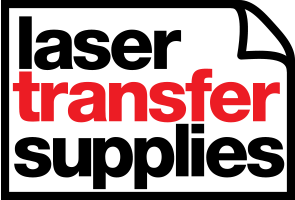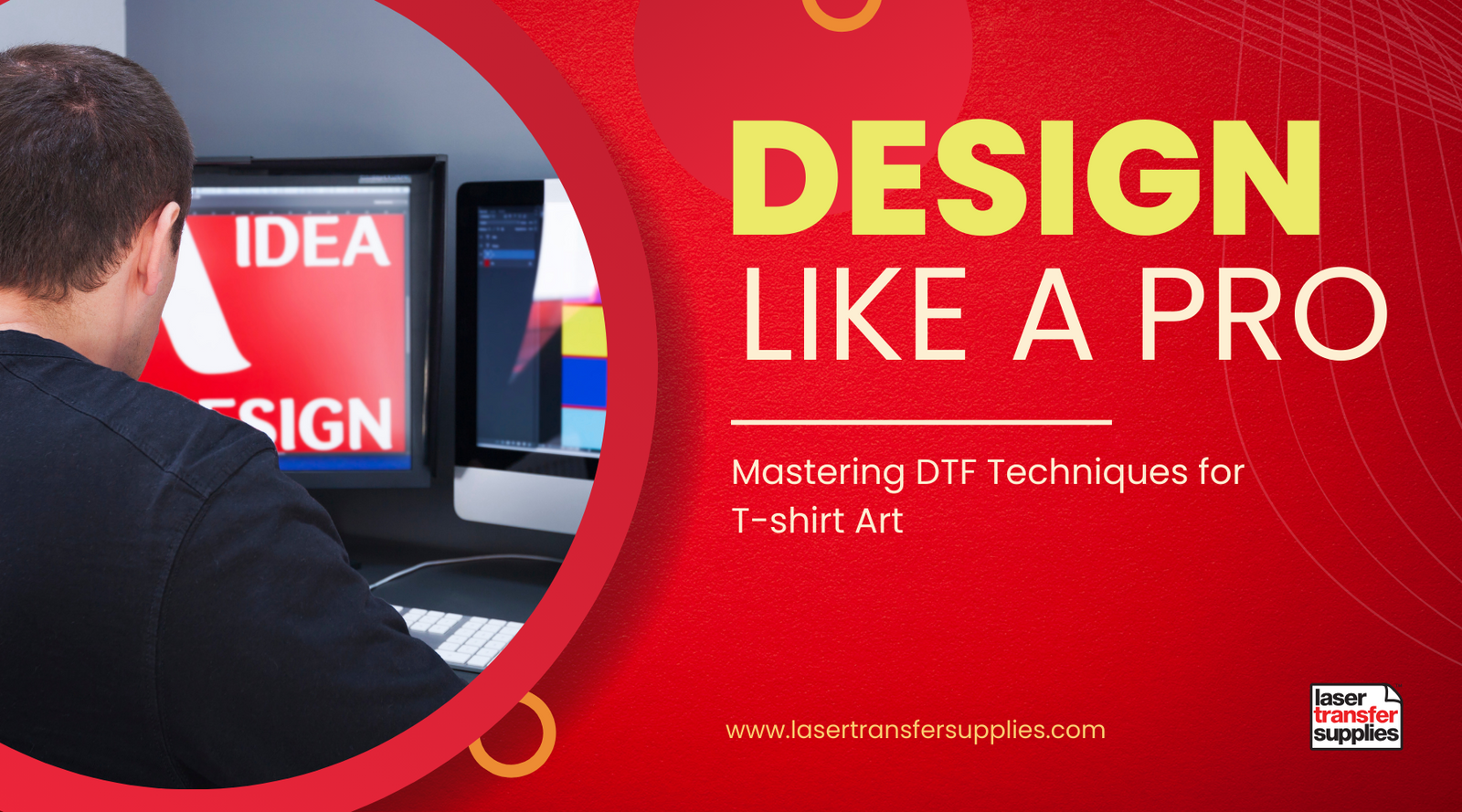
Around 46,000 printing businesses are serving the US market. As the printing industry experiences exponential growth, more and more businesses are turning to DTF printing to meet their diverse and demanding needs.
In this article, you will learn how DTF printing works and what you need to get started. We will discuss the initial cost of equipment and supplies.
We’ll also cover the pros and cons of DTF printing. Lastly, you will learn how DTF printing differs from DTG, White Toner, Screen, and Sublimation printing.
Let’s start!
What Is DTF Printing?
DTF Printing is an advanced printing method that prints colored and white ink layers simultaneously. With DTF printing, designs are transferred onto fabrics like cotton, polyester, synthetic, silk, fleece, and nylon using heat-press technology.
This makes DTF Printing the best choice for creating designs on sportswear and outerwear, such as t-shirts and hoodies.
Note that these materials are difficult to print using other methods like Direct-to-Garment (DTG) printing.
How Does DTF Printing Work?
Unlike regular printing, DTF Printing utilizes a special method with white ink to make colors appear bright and stand out.
Here are simple steps on how DTF Printing works:
First, a special DTF film is prepared with your design printed on it. Then, a layer of white ink is printed on top of the design. This makes the colors appear more vibrant.
Next, a special powder is put on the wet ink to make it stick to the fabric. The DTF film with the design is then put on the clothes and pressed with a heat press machine to transfer the design onto the fabric.
After a little while, the film is carefully peeled off. Once the design is on the clothes, it will be pressed again to ensure it is durable and stays on longer.
With DTF Printing, you can quickly create detailed designs on clothes. It's also a good option for printing on bulky fabrics like hoodies.
How To Start With DTF Printing
If you want to start with DTF Printing, you should be ready to invest to purchase the right equipment and supplies.
First on the list is the DTF printer. You must also buy DTF inks, DTF films, DTF powder, and software. Additionally, you'll need some other equipment like a powder shaker, curing oven, and heat press to do the printing.
Make that dream printing setup a reality! Enjoy our Buy Now, Pay Later Printers!
Things You Will Need In DTF Printing
DTF Printer
A standard inkjet printer adapted for DTF printing. It contains multiple color tanks operating on CMYK settings, allowing various color prints.
For beginners, we recommend the UNINET DTF 100.
DTF Ink
Special inks designed for DTF printing. They are available in Cyan, Yellow, Magenta, White, and Black. The white ink forms the base layer of the print.
DTF Film
These films have superior transferring properties as the printing medium in DTF printing. They come in sheets for small tasks or rolls for large-scale printing.
A white granular product that acts as an adhesive, binding the colored pigments from the printer to the printing surface. This ensures that prints will not be faded and peeled easily.
RIP Software
This software handles factors like color settings, ink drop sizes, and ink levels, affecting how good the print will look. You can trust this software to adjust the colors and save ink, making your prints even better.
Automatic Powder Shaker
This equipment ensures the adhesive powder is applied and removed uniformly. It's time-saving and ensures you melt only the necessary adhesive material onto your design, saving effort and cost.
Curing Oven and Heat Press
The curing oven melts the adhesive powder onto the transfer film. Then, the heat press takes the printed images from the film and puts them onto the fabric.

Why buy each DTF must-have separately when you can purchase our printer packages? They're designed to provide all your DTF essentials in one shop.
How Much Does DTF Printing Cost?
A basic DTF printing complete setup can have a total cost of approximately $8,000.
The first item on your list should be a DTF printer whose price starts at $3,995.00 and DTF inks costing $300. DTF films are available at around $130, while DTF powder can be purchased for $30.
The RIP software is usually priced at $595. Additionally, an automatic powder shaker is available at $2,495. As for curing the prints, a curing oven or heat press can be bought starting at $579.00.
What Products Can You Personalize With DTF Printing?
You can produce a wide range of products with a DTF printer. You can customize:
- T-shirts
- Hoodies
- Hats
- Caps
- Shorts
- Pants
- Bags
- Flags
- Banners
- Tumblers
- Mugs
- And many other products
DTF printing is perfect for different fabrics like cotton, nylon, treated leather, polyester, and blends. So whatever fabric you got, DTF printing can bring your designs to life in any color.
DTF Printing Pros and Cons
If you want to personalize t-shirts and other stuff through DTF printing, it's important to consider thepros and cons before deciding if it's the right choice for you.
DTF Printing Pros
DTF printing has several advantages. First, it requires low investment and allows you to print on any fabric, regardless of color. The prints are elastic and highly resistant to cracking, ensuring durability even when the fabric is stretched or washed frequently.
DTF Printing Cons
On the other hand, there are some downsides to consider in DTF printing. The prints may have a slightly plasticized feel, similar to screen print transfers or HTV. Additionally, the DTF printing process is more complex compared to other techniques.
Even though DTF printing has some downsides, it's a good and inexpensive way to get prints that last long time on various fabric types.
DTF Printing Compared To Other Methods
Now, let’s explore the differences between DTF and other popular printing methods. Our goal is to learn the unique features of DTF printing.
DTF vs. DTG Printing
- DTF requires a lower investment compared to DTG.
- DTF involves additional steps and takes longer production time.
- DTF has a slightly "plastic" finish, while DTG provides a finer finish and better integration with the fabric.
- DTG produces a purer and more intense white compared to DTF.
- DTF printing has slightly lower consumable costs than DTG.
DTF vs. White Toner Printing
- DTF kits are more affordable than White Toner laser printers.
- DTF printing is simpler and eliminates the need for delicate weeding.
- Both techniques provide a similar feel, but DTF inks offer more elasticity and wear resistance.
- White Toner printing offers a more intense white color.
- DTF printing has lower consumable costs compared to White Toner.
DTF vs. Screen Printing
- DTF provides a more uniform feel and works well with detailed designs.
- Screen printing requires separate screens for each color and design element, resulting in a thicker feel on the garment.
DTF vs. Sublimation Printing
- Sublimation printing is time-consuming and suitable for polyester fabrics only.
- DTF printing enables the use of different fabric types and blends, offering a wide range of product options.
DTF Printing FAQs
Are DTF prints high quality?
DTF printing is known for high-quality prints with accurate colors and fine detail. While prints may initially feel plastic-like and stiff, they become more comfortable after a few washes.
What is the best DTF printer for beginners?
The DTF100 Printer from UNINET is one of the best-selling printers for those interested in DTF printing but without experience.
How often do you need to use a DTF printer?
To ensure your DTF white ink stays in perfect condition, a simple daily shake is all that's required. For best results, maintain a consistent printing schedule - at least every 2 days.
Can I use an inkjet printer for DTF printing?
To carry out DTF printing, you need a desktop inkjet printer with textile inks specially designed for DTF printing.
Do you need software to print DTF?
RIP software is important because it takes digital designs and turns them into data that can be printed. It helps ensure the colors look right and the ink behaves properly when printing. You may also need design software, such as Adobe Illustrator, to create your designs.
Conclusion
DTF printing has proven to be the most effective for creating well-detailed and durable designs on clothing items like t-shirts and hoodies.
Whether you're just starting or looking to upgrade, DTF printing can be a powerful addition to your business.
While it requires some initial cost in equipment and supplies, the high-quality results make it a worthy investment for businesses and enthusiasts looking to level up their printing game.



